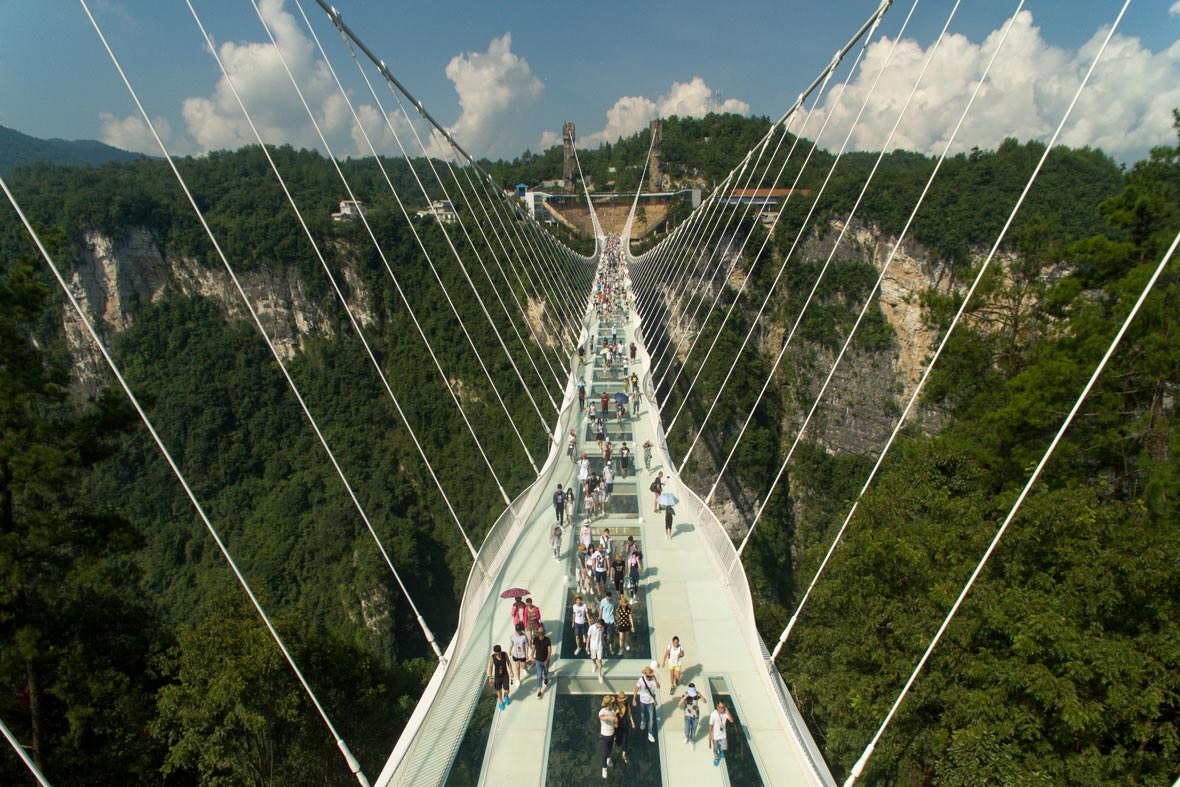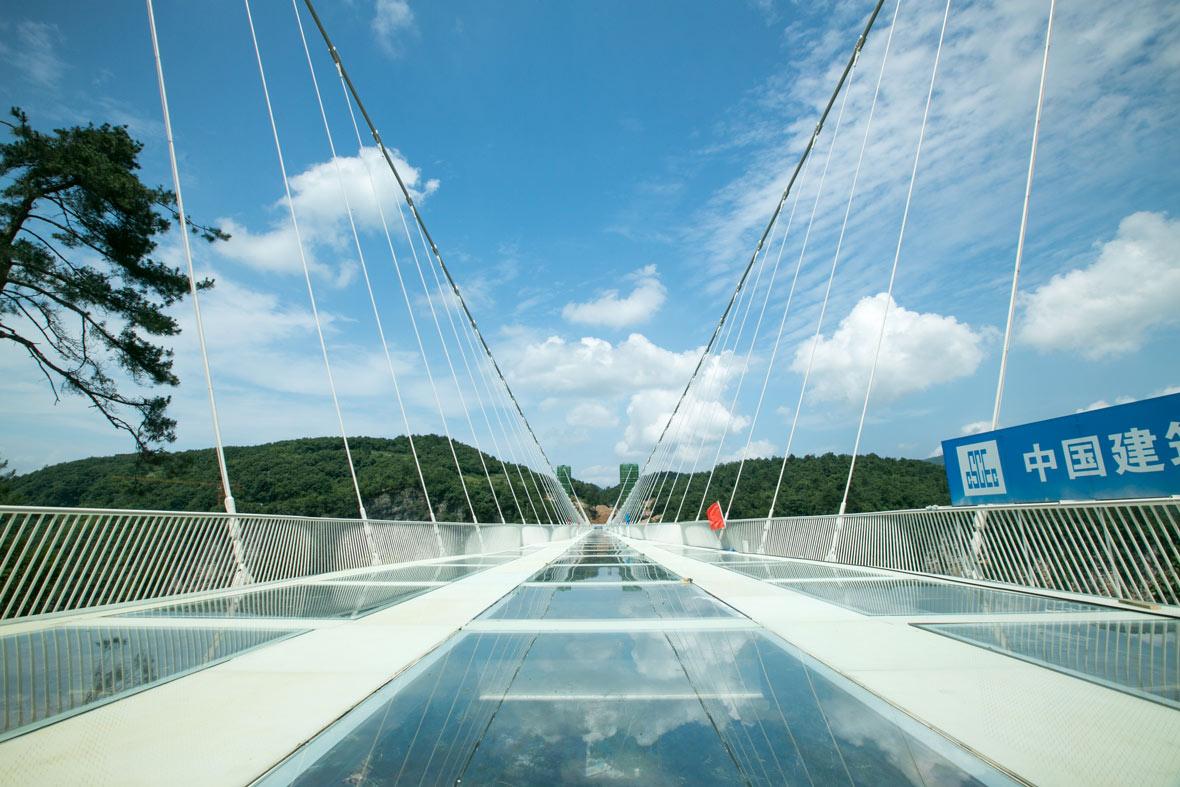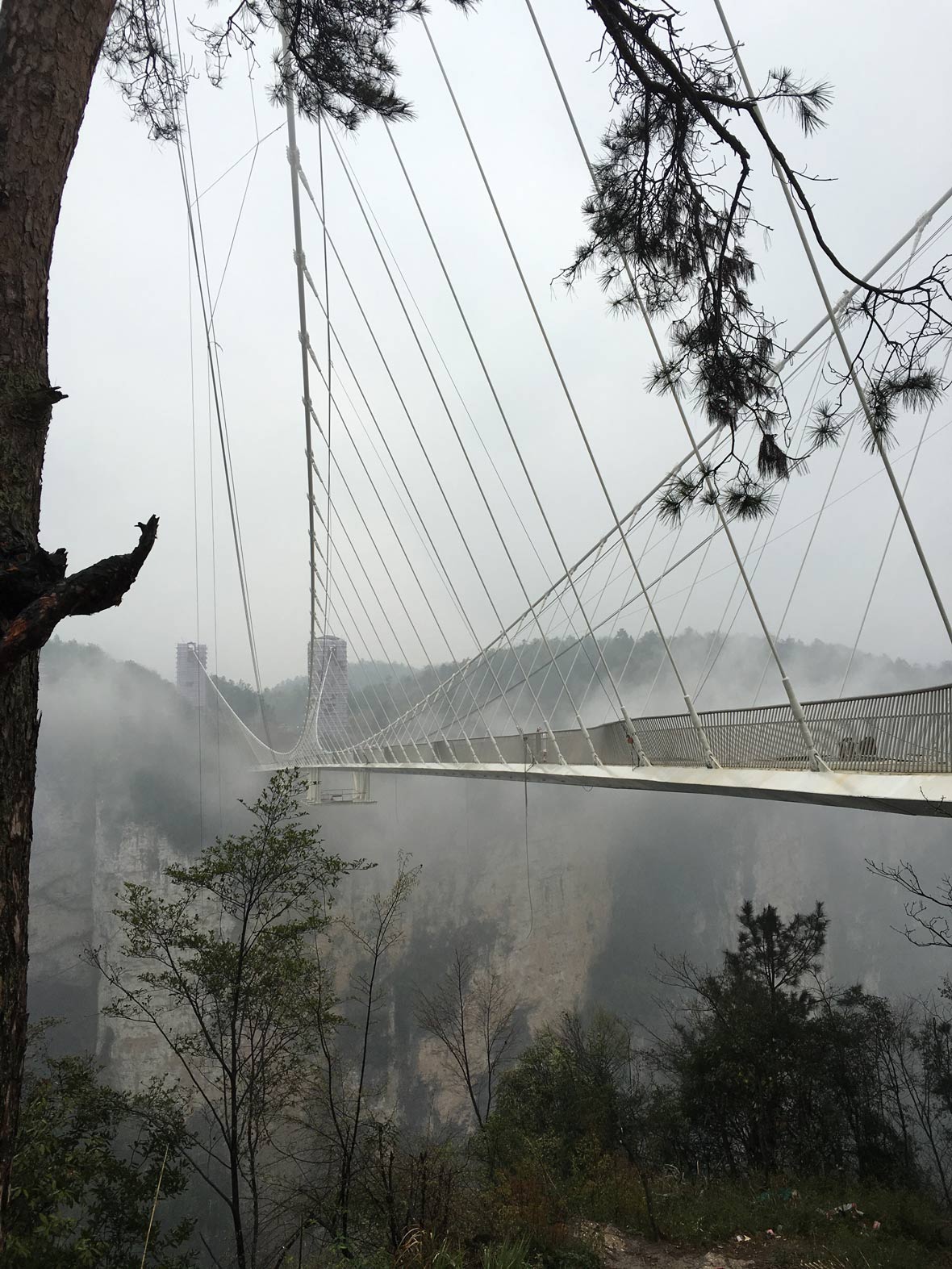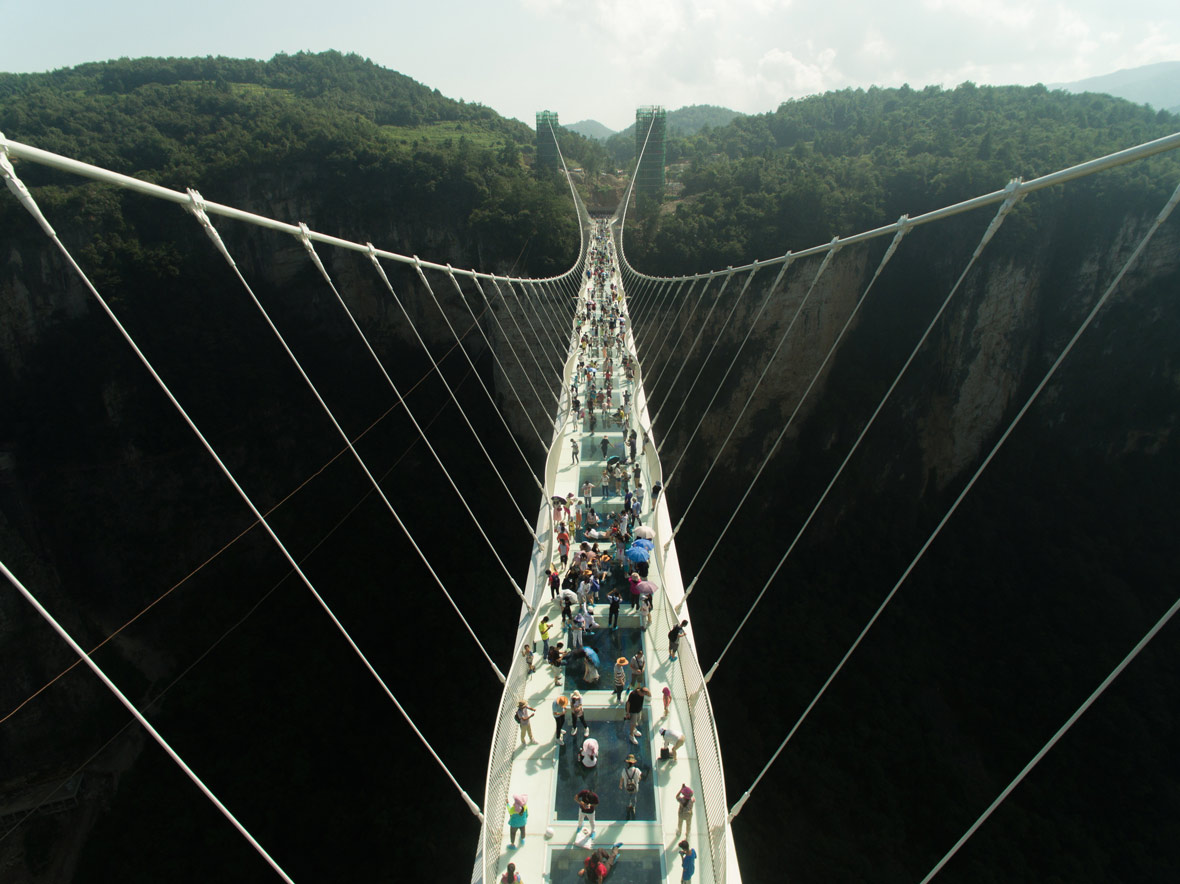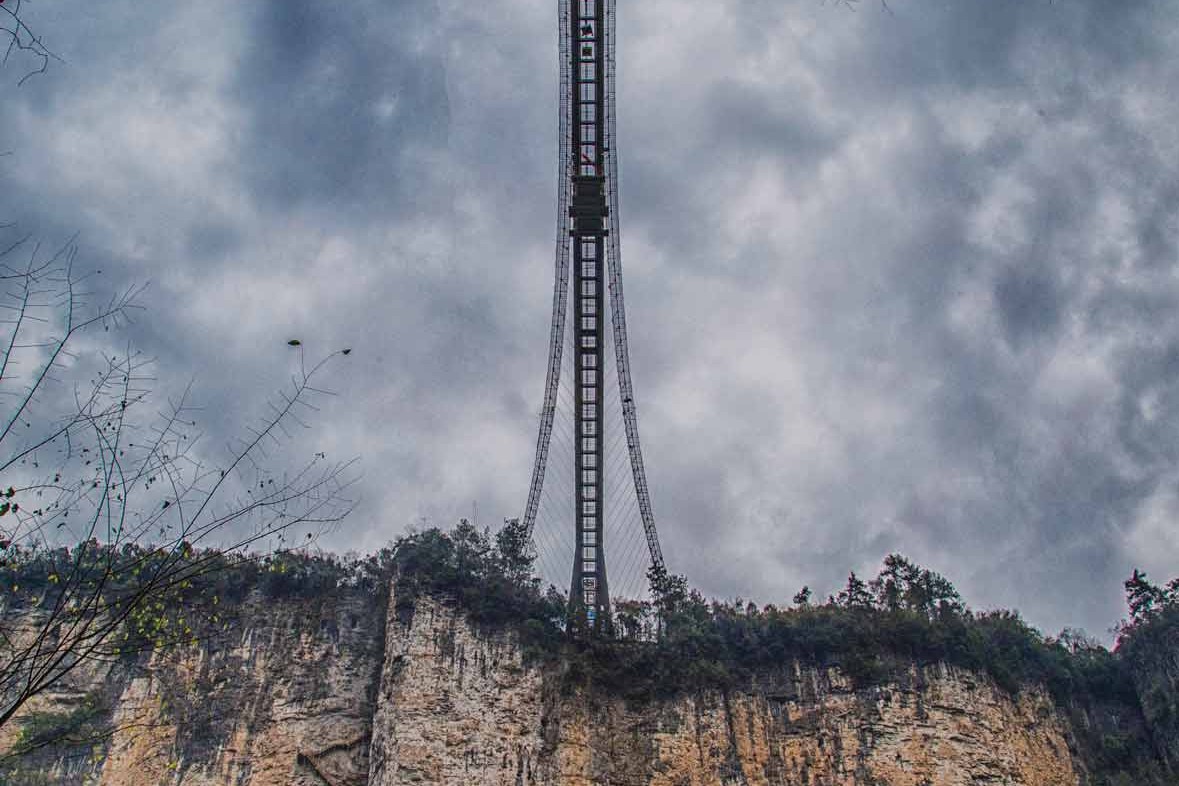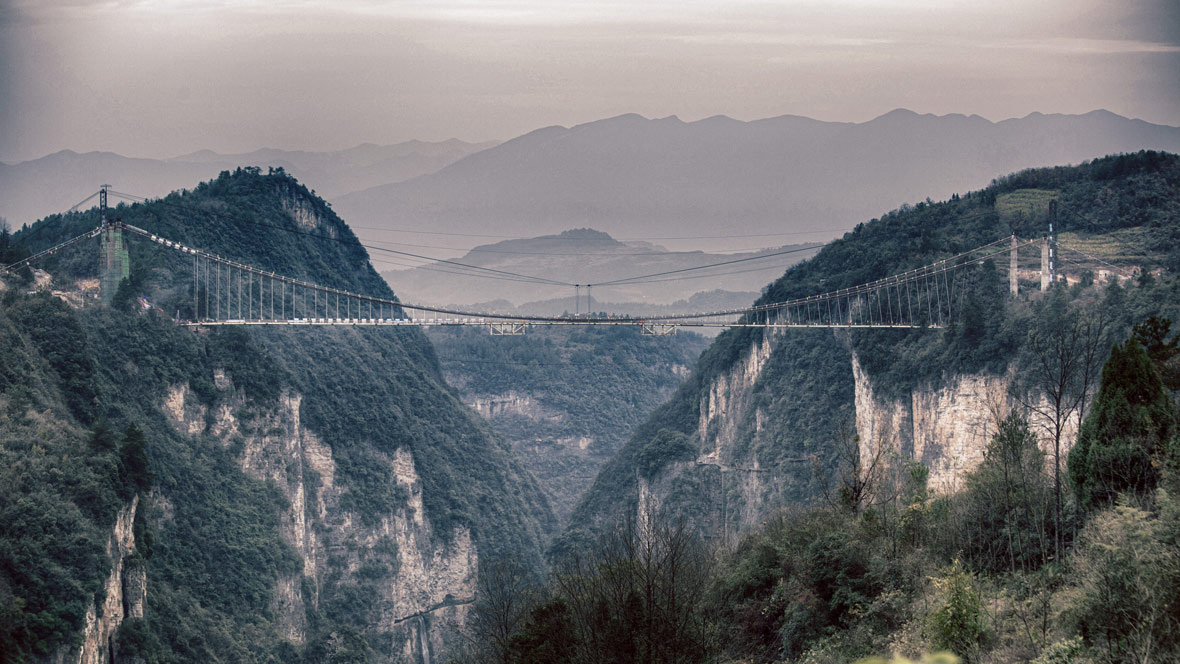
The Zhangjiajie Grand Canyon Glass Bridge is located near Zhangjiajie City, in Hunan Province, China, and is the tallest and longest glass pedestrian bridge in the world. Bridging the gap between two peaks, which are said to have inspired the American blockbuster Avatar, it is 380 meters long, six meters wide, and stands nearly 300 meters above the canyon floor. Its sleek, transparent design blends seamlessly into its surrounding landscape, offering unparalleled views of the national forest park’s dramatic scenery.
张家界大峡谷玻璃桥坐落于中国湖南省的张家界市附近,是全球最高以及最长的玻璃桥。大桥连接着两座高峰,这两座高峰据说也是美国大片《阿凡达》的创作灵感地。这座玻璃桥长380米,宽6米,矗立于距峡谷底部300米的高空,其流线型的透明设计与周围的景观融为一体。置身于桥上,便可将这个国家森林公园的如画景致尽收眼底。
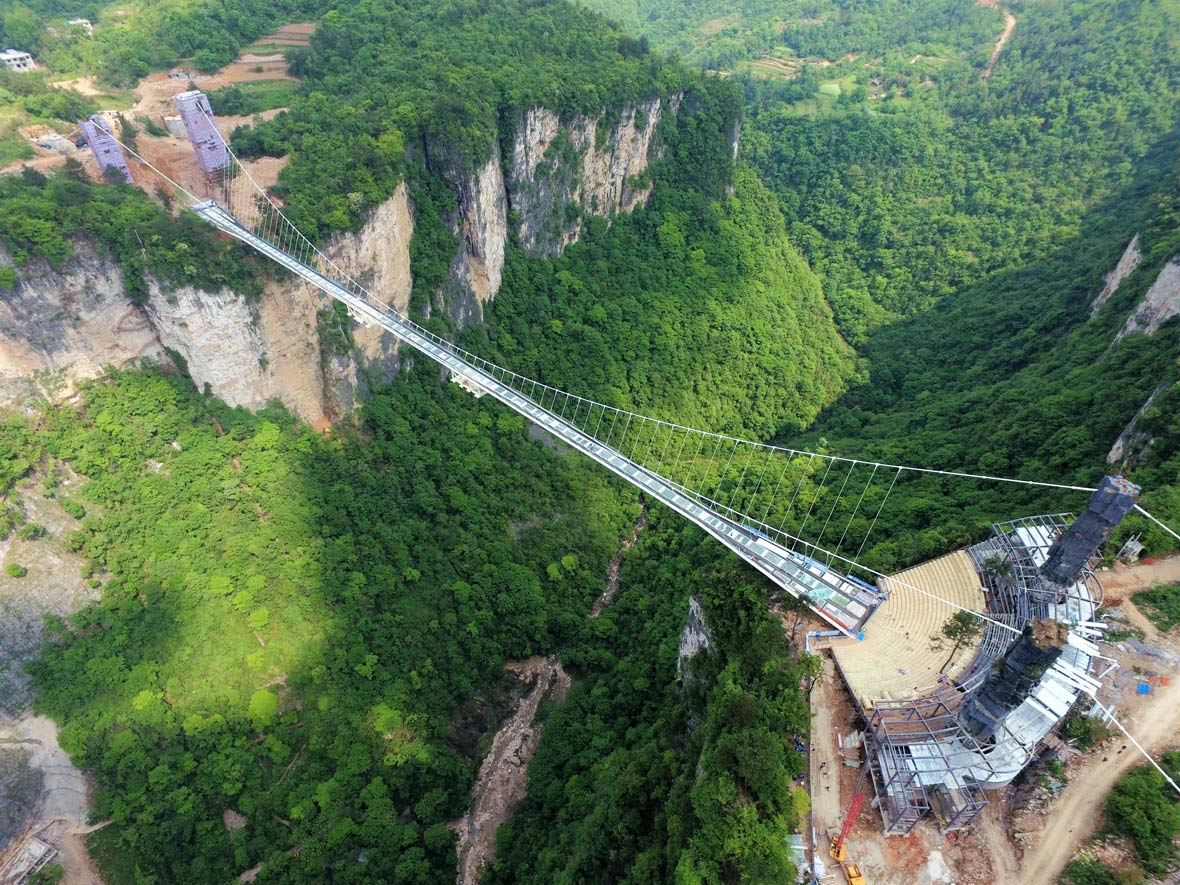
Designed by internationally renowned architect Haim Dotan, who established Haim Dotan Ltd. Architects in 1990, the Grand Canyon Glass Bridge is a cutting-edge reflection of the firm’s focus on innovative and ecological architectural and design projects. Inspired by the ancient Chinese master Lao Tzu, who said, “Great sound is unheard; great form is invisible”, Haim Dotan has managed to create a structure that is both great in size and subtlety, a symbol of both the celebration and preservation of its natural environment.
大峡谷玻璃桥的设计师为蜚声国际的建筑大师Haim Dotan,其于1990年成立了Haim Dotan Ltd. Architects,一直以创新和生态的建筑和设计项目为重点,玻璃桥正是其中的顶尖代表。Haim Dotan表示,玻璃桥设计理念来自中国哲学大师老子的观点:“大音希声,大象无形”。他希望在建筑中融合“薄如蝉翼却十足震撼”的感官体验,并在保护自然环境的同时,也体现大自然的巧夺天工。
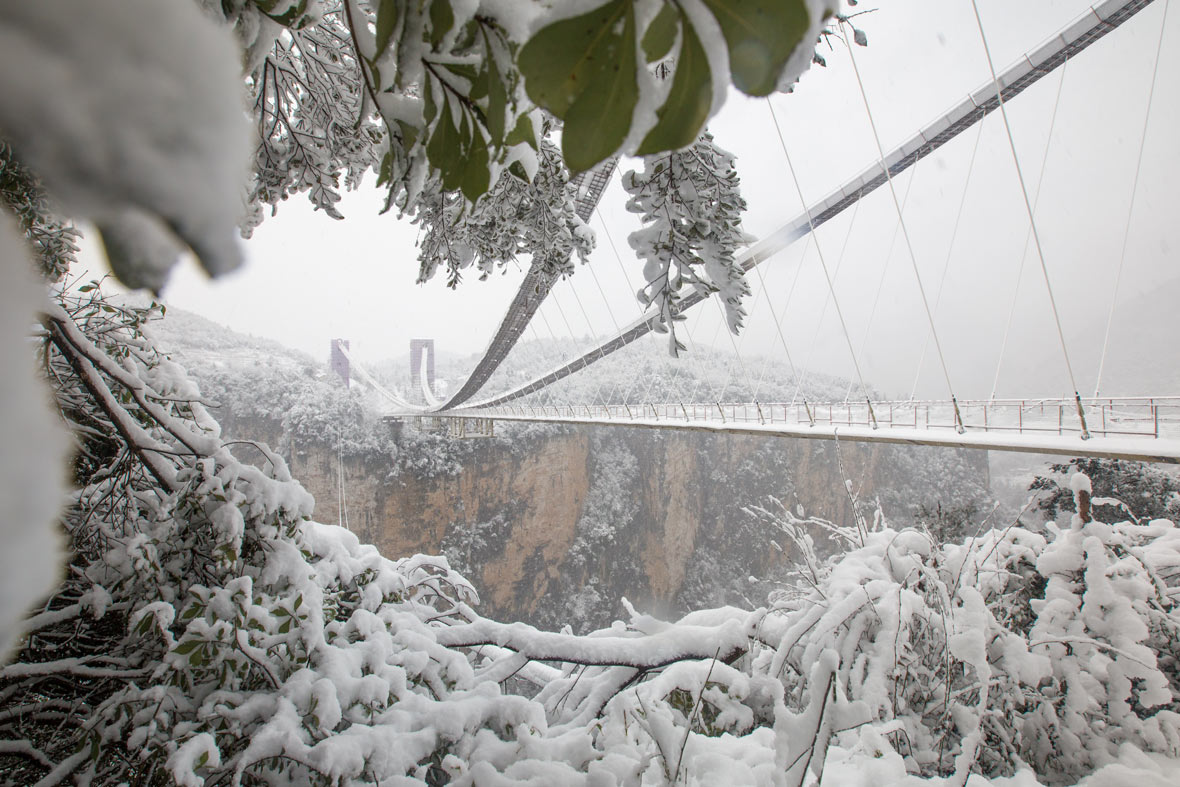
Haim Dotan’s projects offer new perspectives on our global architectural landscape by incorporating progressive technologies that continue to develop construction techniques. Previous to the Zhangjiajie Grand Canyon Glass Bridge, Professor Dotan earned international recognition for his design of the Israel Pavilion for the Shanghai World EXPO 2010. He describes the design as a physical representation of the Confucianist concept of Yin and Yang due its focus on balance, with two curvaceous structures gradually intertwining. Dotan is also a refined poet, philosopher and artist, as well as an educator at Beijing’s DeTao Masters Academy, the Institute of Visual Art, and Shanghai’s Fudan University.
通过引入持续促进施工技术发展的先进科技,Haim Dotan的项目成果为当今全球建筑景观提供了新的视野。在张家界大峡谷玻璃桥之前,Dotan教授就以2010上海世博会上的以色列馆国家馆设计广获国际赞誉。他表示,由于该建筑围绕双曲线结构的交织与平衡展开,可被视为儒家学派阴阳观念的实体代表。Dotan同时也是出色的诗人、哲学家和艺术家,并在北京德稻大师学会、上海视觉艺术学院和上海复旦大学任教。
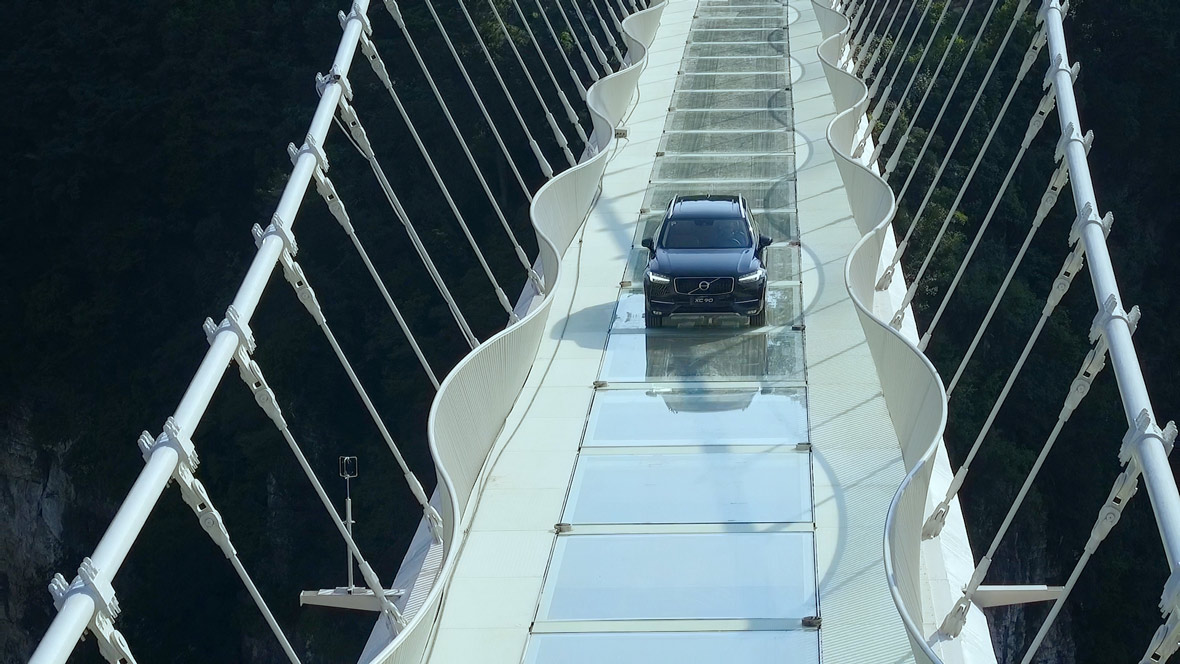
“I believe in nature, harmony, balance and beauty,” says Dotan, “Nature is beautiful as it is. One wants to make the least impact upon it. Therefore, the Zhangjiajie Glass Bridge was designed to be as invisible as possible – a white bridge disappearing into the clouds.” It certainly gives the impression of being suspended in mid-air, a structural glass deck that floats above the canyon like a bird in flight. Slatted handrails flank the bridge’s glass walkway, which narrows in the middle to create an exaggerated perspective. Though its vertigo-inducing views are not recommended for the faint-hearted, the Zhangjiajie Grand Canyon Glass Bridge is the perfect destination for a breathtaking set of holiday snaps.
“我崇尚自然、和谐、平衡和美,” Dotan说,“大自然本身就是一种美。我想尽可能减少对它的影响。因此,张家界玻璃桥在设计时就希望看起来尽可能是无形的——白色轻巧的桥消失在云端的感觉。”毫无疑问,玻璃桥极具震撼魅力,其悬浮在半空中,透明的玻璃板架在峡谷之巅,就像一只展翅于天空的鸟。玻璃道上侧挂的斜拉索构成扶手,越往桥中心收得越窄,看似弱不禁风,其实承受能力非常强。尽管这孤高炫目的视角并不适合恐高胆小一族,但若想在假期中一睹大自然动人心魄的美,张家界大峡谷玻璃桥是你的不二之选。
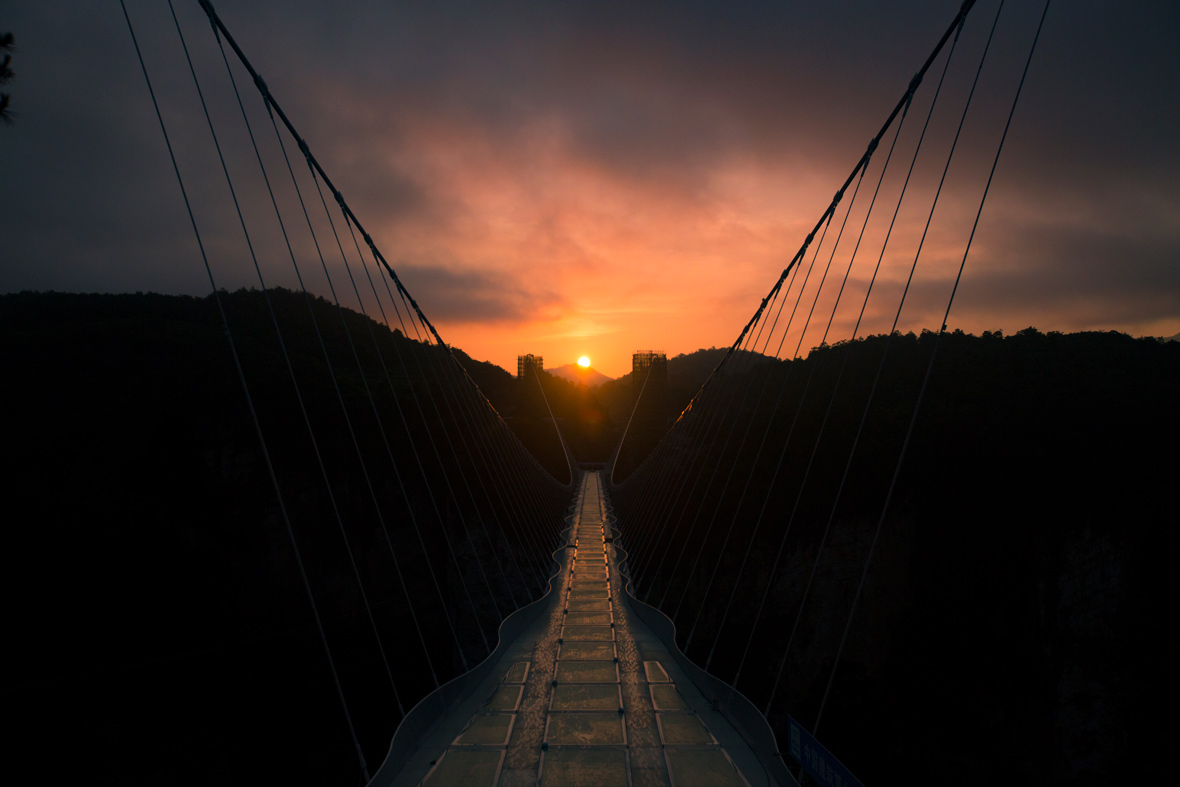
Website: haimdotan.com
Contributor: Ruby Weatherall
Images Courtesy of Zhangjiajie Grand Canyon Tourism Management Co. Ltd


